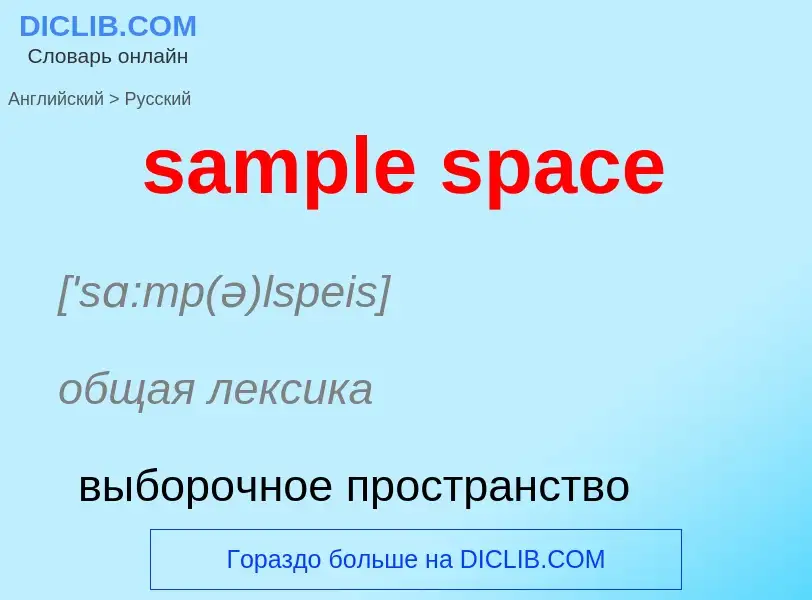Translation and analysis of words by ChatGPT artificial intelligence
On this page you can get a detailed analysis of a word or phrase, produced by the best artificial intelligence technology to date:
- how the word is used
- frequency of use
- it is used more often in oral or written speech
- word translation options
- usage examples (several phrases with translation)
- etymology
sample space - translation to russian
['sɑ:mp(ə)lspeis]
общая лексика
выборочное пространство
пространство выборок
пространство элементарных событий
Definition
Wikipedia
In probability theory, the sample space (also called sample description space, possibility space, or outcome space) of an experiment or random trial is the set of all possible outcomes or results of that experiment. A sample space is usually denoted using set notation, and the possible ordered outcomes, or sample points, are listed as elements in the set. It is common to refer to a sample space by the labels S, Ω, or U (for "universal set"). The elements of a sample space may be numbers, words, letters, or symbols. They can also be finite, countably infinite, or uncountably infinite.
A subset of the sample space is an event, denoted by . If the outcome of an experiment is included in , then event has occurred.
For example, if the experiment is tossing a single coin, the sample space is the set , where the outcome means that the coin is heads and the outcome means that the coin is tails. The possible events are , , , and . For tossing two coins, the sample space is , where the outcome is if both coins are heads, if the first coin is heads and the second is tails, if the first coin is tails and the second is heads, and if both coins are tails. The event that at least one of the coins is heads is given by .
For tossing a single six-sided die one time, where the result of interest is the number of pips facing up, the sample space is .
A well-defined, non-empty sample space is one of three components in a probabilistic model (a probability space). The other two basic elements are: a well-defined set of possible events (an event space), which is typically the power set of if is discrete or a σ-algebra on if it is continuous, and a probability assigned to each event (a probability measure function).
A sample space can be represented visually by a rectangle, with the outcomes of the sample space denoted by points within the rectangle. The events may be represented by ovals, where the points enclosed within the oval make up the event.



.jpg?width=200)
